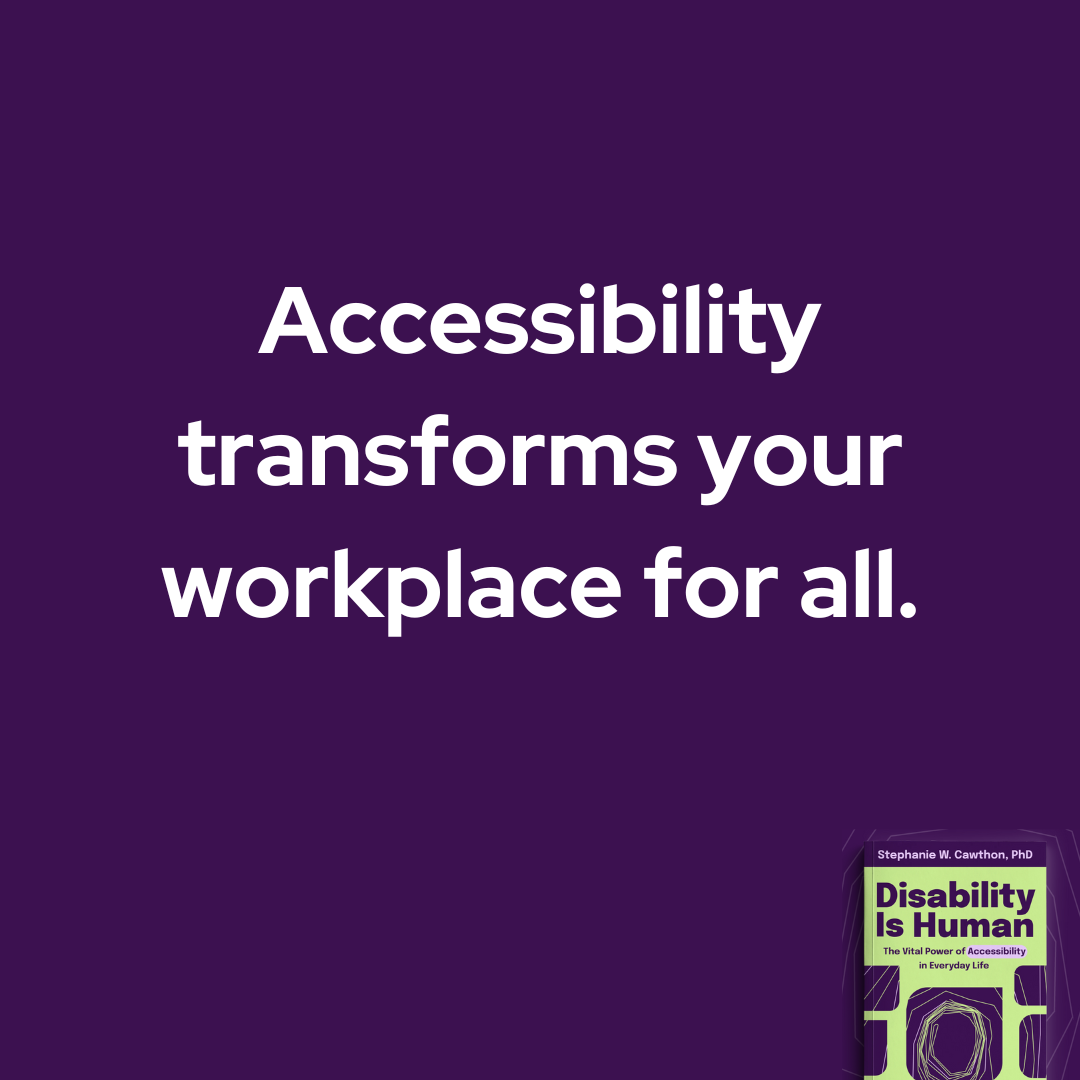Summary
How quickly can you make your workplace more accessible (and gain a competitive edge)?
As a researcher and advocate in the field of accessibility and workplace inclusion, I’ve observed a critical pattern: successful companies don’t just accommodate diversity – they embrace it as a competitive advantage.
Yet many leaders overlook a stunning reality: approximately 25% of adults have some form of disability at any given time. This isn’t just a statistic – it’s a wake-up call for business transformation.
Understanding the Spectrum of Disability
The landscape of disability is far more nuanced than many realize. It encompasses:
- Permanent conditions present from birth
- Acquired disabilities later in life
- Temporary impairments
- Physical limitations
- Cognitive differences
- Psychological conditions
Most importantly, many of these are invisible to the casual observer. Your most talented team members might be navigating workplace challenges you’ve never considered – and they might never tell you about them.
The Hidden Cost of Inaccessibility
Traditional workplace designs often create unintended barriers that silently erode your talent pipeline. These barriers impact your bottom line:
- Decreased productivity
- Increased turnover
- Reduced innovation potential
- Limited collaboration opportunities
- Created unnecessary stress
But here’s the revolutionary insight: Accessibility isn’t just about compliance – it’s a catalyst for organizational excellence.
The Triple Win of Accessible Design
When you implement accessible practices, you create three simultaneous victories:
- Enhanced productivity for employees with disabilities
- Improved functionality for all team members
- Strengthened organizational resilience
Strategic Leverage Points for Leaders
Based on years of research and real-world implementation, I’ve identified several high-impact practices that create immediate value.
Comprehensive Documentation
The power of clear documentation extends far beyond compliance:
- Written processes
- Video tutorials
- Visual guides
- Interactive training materials
These resources don’t just support neurodivergent employees – they accelerate onboarding and reduce training costs across your entire organization.
Inclusive Meeting Practices
Modern meeting accommodations serve everyone:
- Recorded sessions for reference
- Real-time captions
- Advance agendas
- Detailed follow-up notes
These practices ensure full participation not only for deaf or hard-of-hearing employees but also for team members dealing with unexpected life events or those who process information differently.
Information Design Excellence
Thoughtful information design isn’t just about aesthetics. Accessibility can result from implementing:
- Strategic use of white space
- Optimal color contrast
- Carefully selected fonts
- Structured content hierarchy
These elements support employees with reading disabilities and mental health conditions while enhancing focus and comprehension for everyone.
The Connection Imperative
Here’s a fundamental truth: disconnection is the enemy of access. This disconnection manifests in multiple ways:
- Literal disconnection (inability to hear or see)
- Emotional disconnection
- Informational gaps
- Misalignment with common purpose
We’re all in this together. When we create meaningful connections in our people spaces, we’re unlocking the authentic and efficient use of our talent.
Core Principles of Workplace Accessibility
When working with teams to build truly accessible workplaces, I emphasize three crucial underlying assumptions.
- Access Is Not the Burden of Disabled People
Time and again, disabled people and their families bear the brunt of inaccessible spaces. The additional time, cost, and barriers to opportunity they face is burden enough. Placing the responsibility for access on top of that is simply not access. When we charge disabled people with identifying needs, advocating for accommodations, and managing all the logistics behind access, it is not truly accessible. Accessibility is the responsibility of us all.
- Access Is More Than Accommodations
Accommodations are inherently transactional: a disabled person puts in a request, the system responds with an answer, and access is granted. While accommodations are essential and non-negotiable, they’re just a starting point. The challenge arises when accommodations become the endpoint, with little consideration of what happens outside that request fulfillment process. Remember: “Culture will have your strategy for lunch” — without an accessible mindset, accommodations offer only a limited positive impact on overall inclusivity.
- Access Must Be Intentional
Accessibility doesn’t happen by accident. Because so much of our world is built without disability in mind, we must actively work to achieve accessibility. It takes time, awareness, care, and intention to address these deep-seated barriers.
Taking Action
The evidence is clear: organizations that prioritize accessibility experience:
- Higher employee engagement
- Increased innovation
- Better talent retention
- Stronger market performance
Ready to transform your workplace? My book, Disability Is Human: The Vital Power of Accessibility in Everyday Life, and the Official Workbook offer insights, strategies, and frameworks for meaningful team conversations about accessibility. Use these resources to create your own action plan or adapt the materials to your team’s unique context. Your team – and your bottom line – will thank you.
The question isn’t whether to make your workplace more accessible. The question is: How quickly can you implement these transformative accessibility practices to gain a competitive edge?
Remember: When you design for the edges of your workforce, you improve the experience for everyone. That’s not just good ethics – it’s good business.
